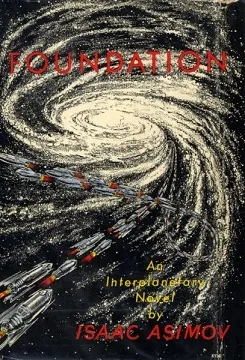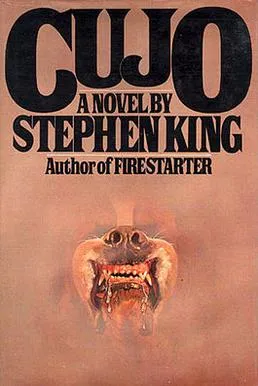Updated for the new 2023-2027 Study Design!
Contents
Unit 3:
- AoS 1: Adaptations and Transformations
- AoS 2: Developing Interpretations
Unit 4:
- AoS 1: Creative Responses to Texts
- AoS 2: Close Analysis
This is your ultimate guide to everything you need to know to get started with VCE Literature. We will be covering all the sections within Units 3 and 4, and have included resources that will help improve your skills and make you stand out from the rest of your cohort!
Scope of Study
Here's what the VCAA study design states...
'The study of VCE Literature fosters students’ enjoyment and appreciation of the artistic and aesthetic merits of stories and storytelling, and enables students to participate more fully in the cultural conversations that take place around them. By reading and exploring a diverse range of established and emerging literary works, students become increasingly empowered to discuss texts. As both readers and writers, students extend their creativity and high-order thinking to express and develop their critical and creative voices.'
'Throughout this study, students deepen their awareness of the historical, social and cultural influences that shape texts and their understanding of themselves as readers. Students expand their frameworks for exploring literature by considering literary forms and features, engaging with language, and refining their insight into authorial choices. Students immerse themselves in challenging fiction and non-fiction texts, discovering and experimenting with a variety of interpretations in order to develop their own responses.'
...but don't worry if the above is vague, we'll take you through exactly what you need to know for Year 12 Literature! Let's get into it!
Unit 3
In Unit 3, students consider how meaning is created through form, and how different interpretations may be developed out of a singular text. First, students understand how writers adapt and transform texts, and how their interpretation of the text impacts this transformation into a different form. Secondly, students use another text to develop their own interpretations of a text with regard to its context, and views and values. Unit 3 School-Assessed Coursework is worth 25 per cent of your total study score!
AoS 1: Adaptations and Transformations
This task is designed for you to critically analyse and actively engage with the text, understanding its nuances inside and out in order to decipher its meaning. Be individual in comparing and contrasting the two texts – avoid the obvious similarities/differences everyone in your class will also notice. It is the insightful analysis of the subtleties of how meaning is altered that will help you stand out!
Here are some important aspects to consider and questions to ask yourself while tackling this SAC:
- Identify the unique conventions in the construction of the original text
- Now do Step 1 with the adapted/transformed text
- How do the two text forms differ? How are they the same? The most crucial step is what meaning can be derived from the similarities and differences? How does the meaning change?
- Note additions and omissions (and even silences)
- Historical context and setting
- How does the change in form impact you as the reader/viewer?
- Incorporate pertinent quotations from both forms of text to substantiate and support your ideas and key points.
Most importantly, share your original interpretation of what meaning and significance you can extract from the text, and how you believe it changes once the form alters.
Also ask yourself these questions:
- What makes the text in its original form interesting or unique?
- Is that quality captured in its adaptation/transformation?
For more detailed explanations on these 7 aspects, you might want to check out Adaptations and Transformations Lit SAC: A How To Guide.
AoS 2: Developing Interpretations
Developing interpretations is an AoS that focuses on investigating the meaning and messages in texts, as evidenced by the text itself, it’s author and their context. As per the study design:
'Students first develop their own interpretations of a set text, analysing how ideas, views and values are presented in a text, and the ways these are endorsed, challenged and/or marginalised through literary forms, features and language. These student interpretations should consider the historical, social and cultural context in which a text is written and set. Students also consider their own views and values as readers.'
Following this, you investigate a supplementary reading which will offer another interpretation of the text, which may enrich or challenge your interpretation by agreeing or disagreeing with your interpretation. Using this supplementary reading, you reconsider your initial interpretation and apply your new understanding of the text to key moments.
The SAC for Developing Interpretations is a little bit weird. It’s worth 50% of unit 3 (or 25% of your total study score), but is split into two parts:
- Part A: An initial interpretation of the text’s views and values within its historical, social and cultural context.
- Part B: A written response that compares/interweaves and analyses an initial interpretation with a subsequent interpretation, using a key moment from the text.
Your teacher might do the two parts together, or separately. In any case, Part B will include the use of a passage from the set text that you must engage with. How does the passage help you to interpret the text, and how does that interpretation agree or disagree with the interpretation presented in the supplementary reading?
The most difficult part of the SAC for this AoS is balancing your interpretation, the textual evidence, and the alternative interpretation of the supplementary reading. It is vital that if you are doing Literature this year, that you know your 3.2 text like the back of your hand, and that you practice writing loads and loads. It is also worth trying to make your interpretation incredibly specific, so that you can go in-depth into one idea, rather than simply skimming over 3 or 4 big ideas.
For more on Developing Interpretations, you might want to check out VCE Literature Study Design (2023-2027): A Guide to Developing Interpretations which explains in detail what the new AoS is about and what you need to do.
And, if you're studying Alias Grace you'll find our Developing Interpretations SAC Guide on interpreting Alias Grace especially helpful.
Unit 4: Interpreting Texts
AoS 1: Creative Response & Reflective Commentary
The most important part of this task is that you must have a highly convincing connection between the original text and your creative response.
There must be a tangible relationship present, through an in-depth understanding of the original text’s features. These features include characterisation (what motivates these characters), setting, context, narrative structure, tone and writing/film style.
You can establish this relationship by:
- Adopting or resisting the same genre as the original text
- Adopting or resisting the author’s writing/language style
- Adopting or resisting the text’s point of view
- Adopting or resisting the original setting, narrative structure or tone
- Writing through a peripheral character’s perspective
- Developing a prologue, epilogue or another chapter/scene
- Rewriting a key event/scene from another character’s point of view: Does this highlight how important narrative perspective is?
- Recontextualising the original text
For detailed explanations on how to establish these relationships, read "Creative Response To Text" Ideas.
The VCAA Literature Study Design also determines that students must submit a ‘close analysis of a key passage’. This aspect of the assessment counts for 20 of the 60 marks available for the Create Response outcome. The study design elaborates that students must produce:
‘A close analysis of a key passage from the original text, which includes reflections on connections between the creative response and the original text.’
In short, VCAA wants you to not only analyse the original text and use it as the basis for your Creative Response, they want you to be able to closely analyse a section of the original text, and link it to and reflect upon your creative response. This is different from previous years and the same task in English, the Reflective Commentary. You must use the skills of close analysis in this task. To include these things, look to the key knowledge and skills outlined in the study design.
Key Knowledge:
- Understanding of the point of view, context and form of the original text
- The ways the literary form, features and language convey the ideas of the original text
- Techniques used to create, recreate or adapt a text and how they represent particular views and values
Key Skills:
- Discuss elements of construction, context, point of view and form particular to the text, and apply understanding of these in a creative response
- Analyse closely the literary form, features and language of a text
- Reflect on how language choices and literary features from the original text are used in their adaptation
As you write, ensure you are discussing how the author uses point of view, context, form, elements of construction and stylistic features in their text. It is imperative that you describe how you have similarly used such device in your creative response. Ensure that you also discuss how you are involving the ideas and themes of the text in your creative piece, and how you are discussing them further, or exploring them in greater depth. Obviously only talk about those that are relevant to your creative response!
To read a sample Reflective Commentary, check out Elly's blog post on how to Score 10/10 On The Reflective Commentary
AoS 2: Close Analysis
From the VCAA study design:
'In this area of study students focus on a detailed scrutiny of the language, style, concerns and construction of texts. Students attend closely to textual details to examine the ways specific passages in a text contribute to their overall understanding of the whole text. Students consider literary forms, features and language, and the views and values of the text. They write expressively to develop a close analysis, using detailed references to the text.'
In plain words, your teacher (and eventually examiner in the end of year exam) will give you 3 passages from your text. You'll be asked to read each of these passages, identify key ideas or themes present in each of the passages, and write an essay in response.
Writing the Introduction
Introductions are an excellent way to showcase your ability to provide an insight into your personal “reading” of the text, interpret the passages and allow you an avenue through which to begin your discussion of the material.
When constructing introductions, it is important to note that the VCAA Literature Exam Criteria is as follows:
- Understanding of the text demonstrated in a relevant and plausible interpretation
- Ability to write expressively and coherently to present an interpretation
- Understanding of how views and values may be suggested in the text
- Analysis of how key passages and/or moments in the text contribute to an interpretation
- Analysis of the features of a text and how they contribute to an interpretation
- Analysis and close reading of textual details to support a coherent and detailed interpretation of the text
- Considering these points, your introduction should feature these 2 elements: your personal reading of the text and your interpretation of the passages.
- In terms of structure, try to begin with a sentence or two explaining your personal reading of the text. The key to doing so in a manner befitting Close Analysis however, is to utilise quotes from the passages to supplement your assertion.
Head over to Jarrod's blog to read a sample introduction: VCE Literature Close Analysis: Introduction
Extra Resources
VCE Literature Essay Approaches - Not a Language Analysis
What is Authorial Intent in VCE English and Why Is It Important?
The Importance of Context in Literature
Study Techniques: How To Approach a Text That You Hate
Why Genre Matters in VCE Literature: An Analysis of Dracula
Developing Interpretations SAC Guide: Interpreting Alias Grace





%20(2).webp)




.jpg)